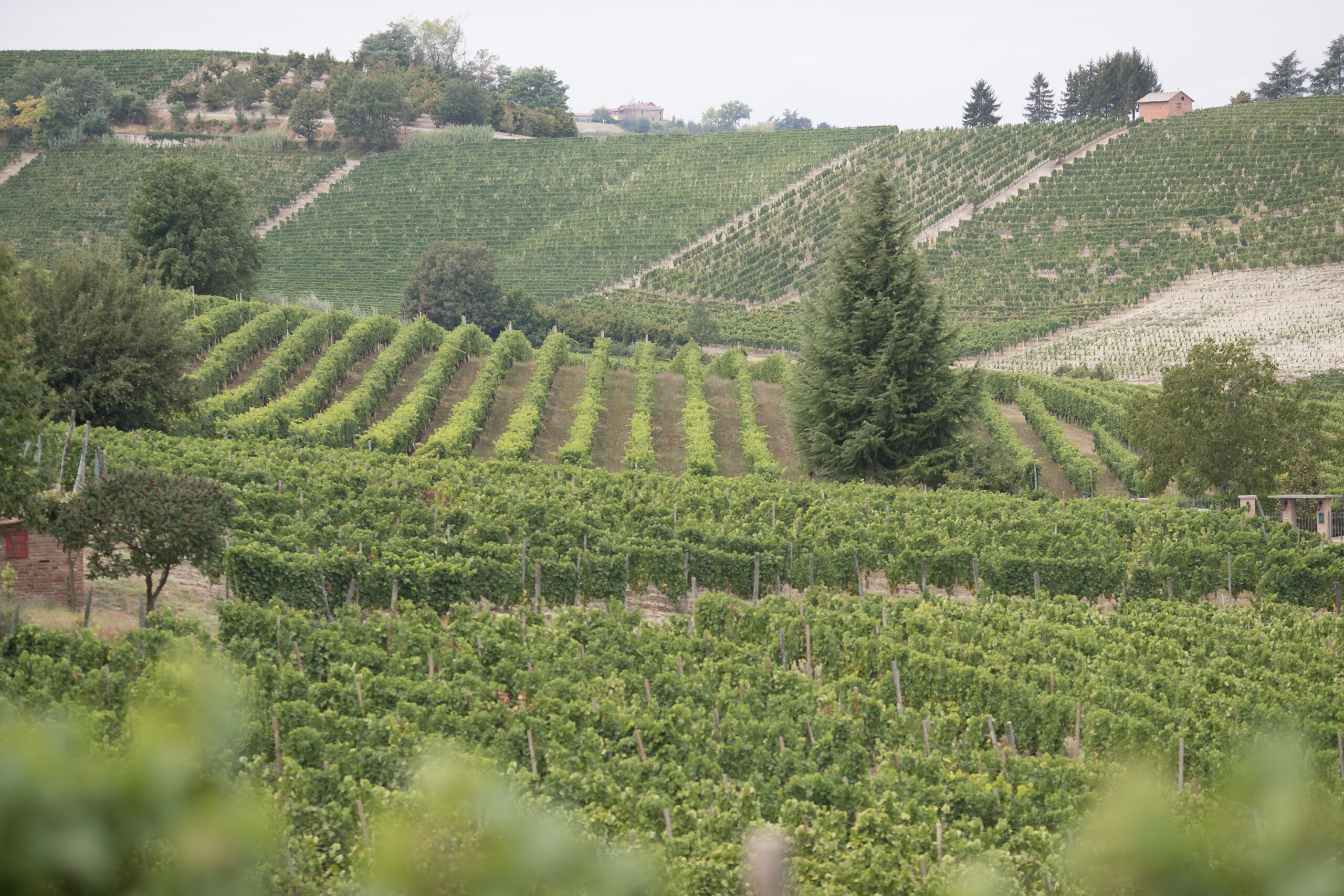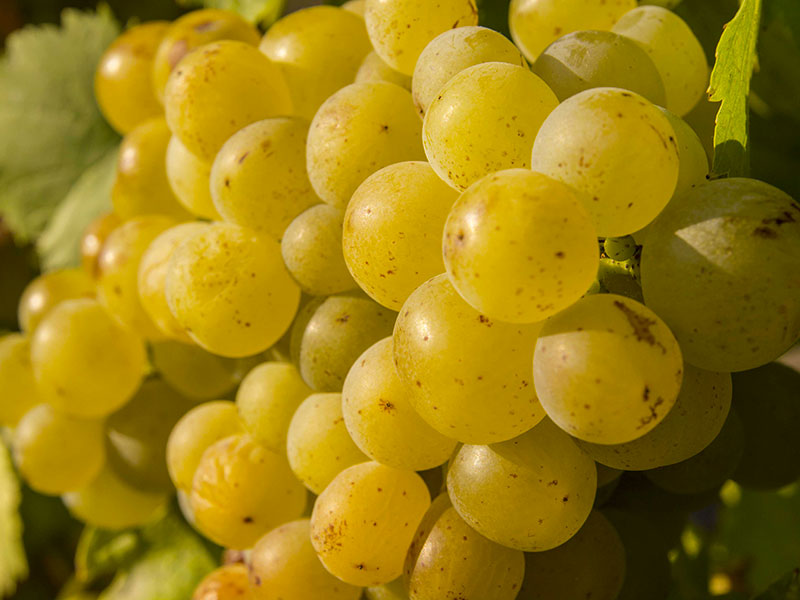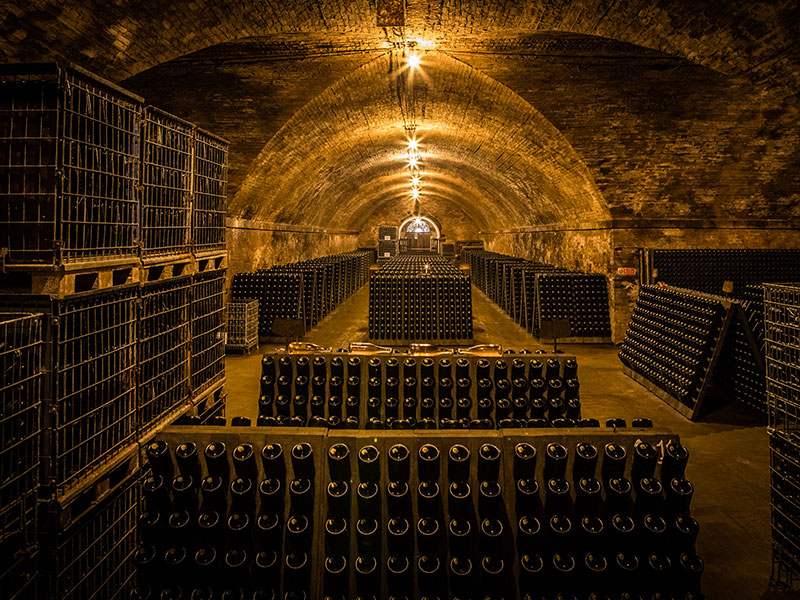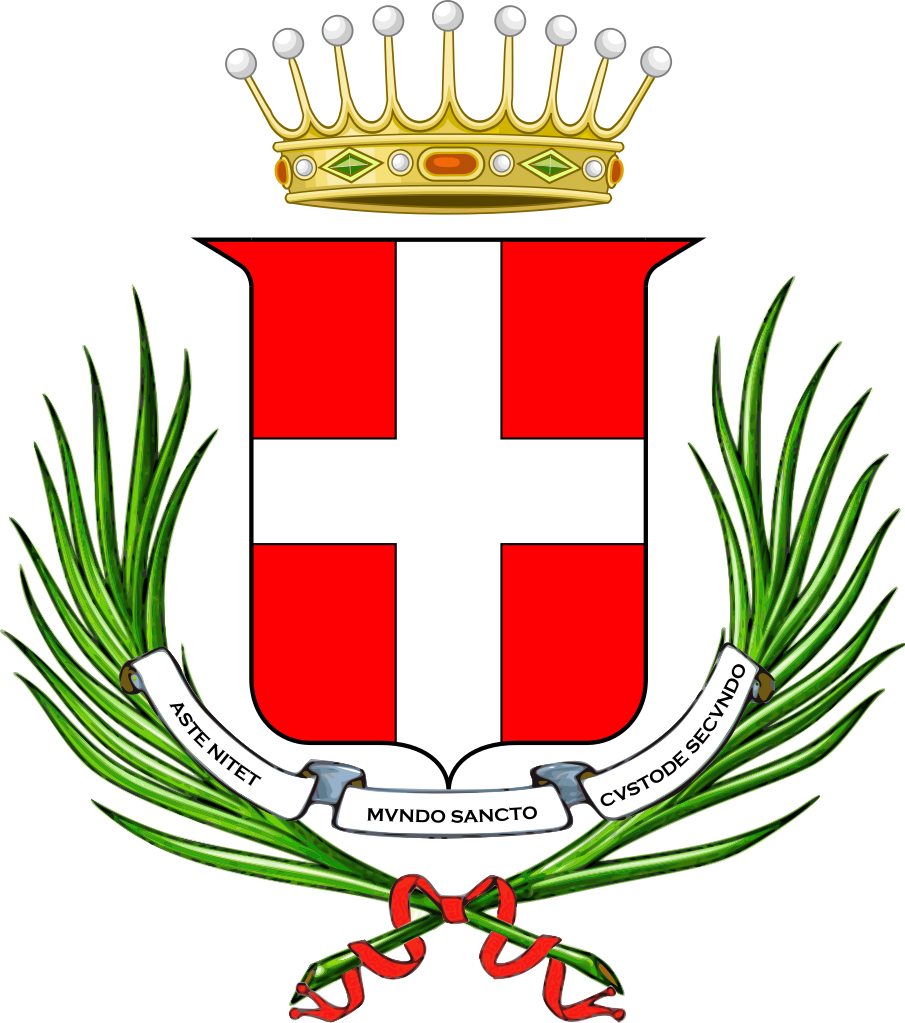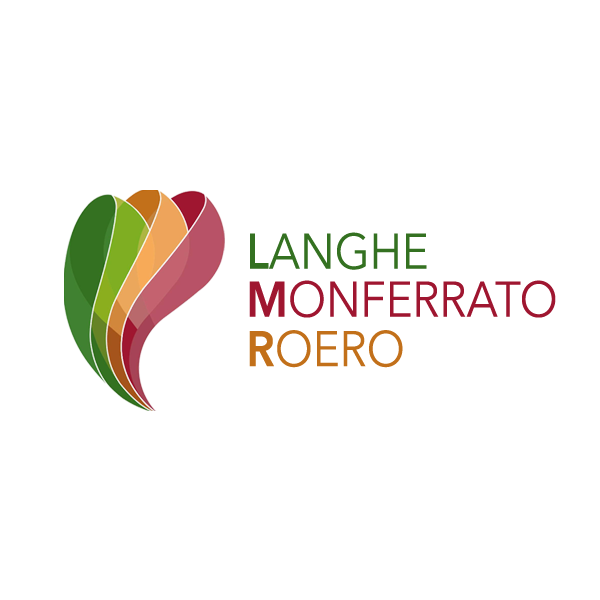Asti Spumante D.O.C.G.
The Barbera Grape Variety and the Monferrato Terroir
A tradition of over seven hundred years
The two D.O.C.G. flagship wines of Asti, Asti Spumante and Moscato d'Asti, are obtained from the Moscato Bianco vineyard with two different processing methods.
Grown between the Bormida and Tanaro rivers, in the provinces of Asti, Alessandria and Cuneo, Moscato Bianco is an ancient vine variety (the first evidence dates back to 1300) from the eastern Mediterranean basin, used to produce sweet and intensely aromatic wines.
These grapes are also grown in the area between Langhe and Monferrato, where the wine tradition meets the most modern techniques for a production of international prestige.
The particular climatic and geological characteristics of the area and the calcareous soils have favored the spread of the Moscato Bianco grape on the Piedmont hills, with an extension of about 9,700 hectares and over 4,000 companies involved in the production.
The leaves are medium in size and pentagonal in shape, while the ripe bunches are cylindrical and slightly elongated. They sprout in the second decade of April, reaching the right degree of ripeness in the second half of September, when the grapes are harvested strictly by hand, to preserve their integrity and aroma.
The greenish-yellow colored berries are characterized by a thin skin and an intensely aromatic flavor.
Il consorzio per la tutela dell’Asti (Consortium for the Protection of Asti)
Consorzio per la tutela dell'Asti (Consortium for the protection of Asti) was established in 1932, with the aim of defining the area of origin, the grape variety, the preparation technique, and the final typology.
Today, the Consortium deals with both the promotion of knowledge and dissemination of Asti in the world and the quality control of the final product, granting or denying the consortium trademark.
The Consortium has its headquarters in Asti, in Piazza Roma 10 in Palazzo Gastaldi.
Taste and Enjoy
Asti Spumante D.O.C.G
Asti D.O.C.G. is the sweet sparkling wine par excellence and has made the name of this city famous in the world.
It is characterized by a fruity aroma and flavor, with an immediate fragrance, with moderate alcohol content. The scent is floral, with hints of orange blossom, lime and acacia, while the flavor is both acidic and delicately aromatic.
The color, which can vary from straw to very light golden, is of a brilliant clarity, interrupted by fine and persistent bubbles.
The sparkling wine production process is acheived using the Martinotti or Charmat method, using selected yeasts in autoclaves to obtain a fast fermentation.
Although it was born as a sweet sparkling wine, since 2017, a variant of dry Asti, characterized by a more prolonged refermentation, has been produced. This results in a lower sugar residue and a better conservation of its typical aroma.
Asti Spumante D.O.C.G. Metodo Classico
The version of Asti Metodo Classico is obtained with a classic or champenoise sparkling process in the bottle, which gives life to different and more structured organoleptic characteristics, and requires a minimum refermentation time of nine months.
Asti Spumante D.O.C.G. at the Table
Preferably served at a temperature of 6-8 °C, Asti Spumante D.O.C.G. is the ideal protagonist of any festive occasion.
Asti Dolce, with a moderate alcohol content, is suitable for accompanying fruit, desserts and dry pastries, but also for closing lunches.
Asti Secco is excellent both as an aperitif and as an accompaniment to spicy or savory dishes, such as cold cuts, fresh cheeses, risottos, white meats, fish and shellfish.



